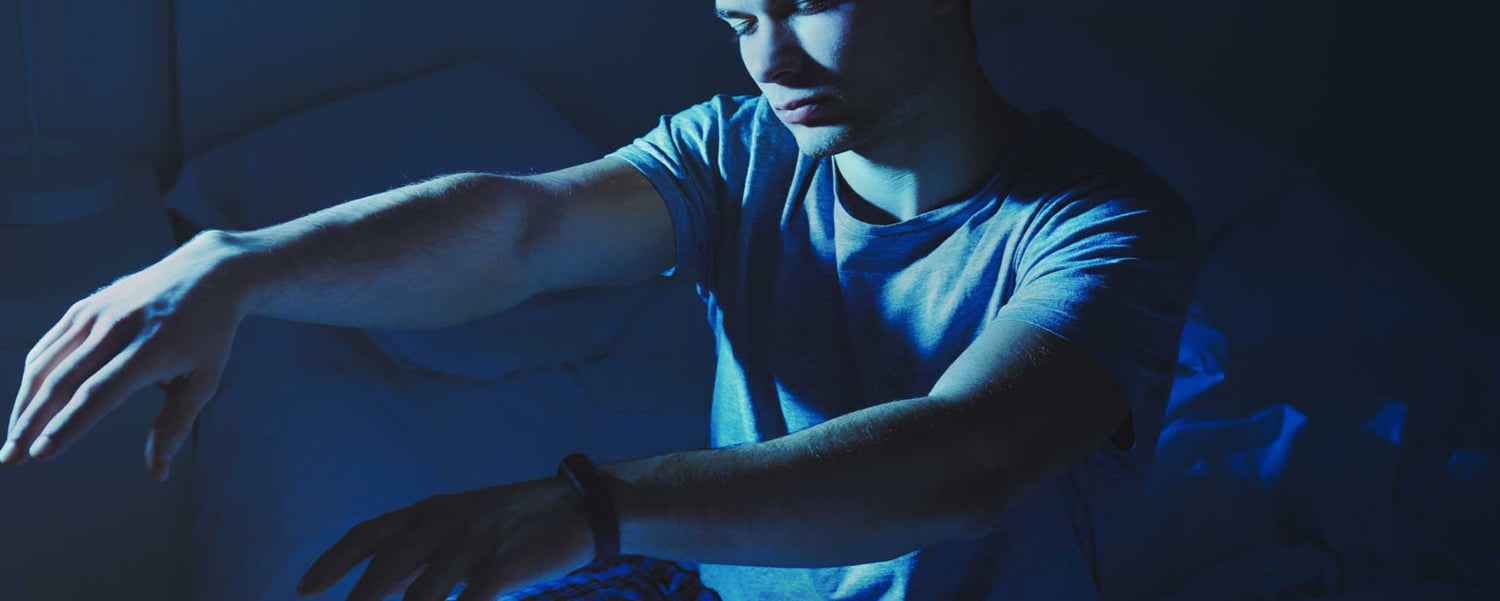Are you or a family member awakening with fatigue and unexplained injuries? Do you live with someone and hear strange bumps during the night?
Publish 8 July 2021
Discovering a Parasomniac
You hear a bump in the night. Mobile phone in one hand and golf club in the other, you cautiously sneak up behind a shadowy figure in the kitchen. With a pounding heart, your mind wrestles with the choice of striking this intruder or pressing the emergency speed dial.
When the figure turns, you recognize it is a beloved family member. However, the eyes are glassy. You call out his name but the response is incoherent. He moves methodically through a breakfast routine before shuffling back to bed. The next morning, he has no recollection of the midnight snack.

This parasomnia is known as sleepwalking or somnambulism. It takes late-night stumbling to the bathroom for bladder relief to another level. More often affecting male children, adults with this condition can perform routine behaviors. They can leave their home, drive a car, get involved with risky behavior, and become aggressive upon awakening or during sleepwalking.
Fancy Name For Sleepwalker

Somnambulism is a state of dissociated consciousness, in which the affected person is partially asleep and partially awake. The activities taking place during the NREM phase of sleep lead to fatigue during waking hours. In some cases, fearful dreams, or night terrors, accompany somnambulism.
There is no evidence that somnambulists walk with their arms extended out, as depicted in cinema. Sleepwalkers walk normally with arms down. While modern medicine still has been unable to pinpoint an actual cause for sleepwalking, it has been able to rule out fantasy or wish fulfillment as a reason. Many factors can increase the likelihood of a somnambulant episode:
- Sleep deprivation and inconsistent sleep schedules
- Medical conditions, including pregnancy, menstruation, obstructive sleep apnea, and acid relux
- Illness such as fevers, asthma, allergies, magnesium deficiency, and any stress-induced conditions
- Medications, particularly psychoactive drugs that affect ones level of consciousness (sedatives, hypnotics, tranquilizers, stimulants, antihistamines, and neuroleptics for psychosis)
- Drugs, particularly alcohol
- There may be a genetic component to this sleep disorder.
Somnambulism Dangers
Without a response in the darkness, you almost smashed a family member in the head within your own home with a golf club. Imagine how easy it is to get into trouble on the streets. In the absence of physical confrontations, a sleepwalker can fall and injure himself. Occasional episodes of sleepwalking typically resolve on their own. According to the Mayo Clinic, consult your doctor if the sleepwalking episodes fit into any of the following patterns:
- Occur more than one to two times a week.
- Lead to dangerous behavior or injury to the person who sleepwalks or to others.
- Cause significant sleep disruption to household members or the person who sleepwalks.
- Result in daytime symptoms of excessive sleepiness or problems functioning.
- Continue into your child’s teen years.
- Can begin for the first time as an adult.
“What would usually be considered a benign condition, adult sleepwalking is a potentially serious condition and the consequences and dangers of sleepwalking episodes should not be ignored,” according to Dr. Dauvilliers, a professor of physiology and neurology and director of the sleep lab at Gui-de-Chauliac Hospital in Montpellier, France.
Some sleepwalking goes undiagnosed if others are not able to observe the behavior. The estimated lifetime prevalence of sleepwalking is about 7%, with about 1% of the U.S. population reporting such every year. If a close relative sleepwalks, you are ten times more likely to share the condition. Discuss concerns with your family physician or sleep disturbance specialist.
To support the writing of useful articles about neurology, ClinicalPosters sells human anatomy charts, scientific posters, and other products online. You may sponsor specific articles, become a ClinicalNovellas Member, or remit a small donation.
ClinicalPosters sells human anatomy charts, scientific posters, and other products online to offset expense of the writing useful articles about neurology. Slide extra posters into DeuPair Frames without removing from the wall.
Show your support by donating, shopping for ClinicalPins, becoming a ClinicalNovellas Member, or leaving an encouraging comment to keep the research going.
To support the writing of useful articles about neurology, ClinicalPosters sells human anatomy charts, scientific posters, and other products online. You may sponsor specific articles or remit a small donation.
ClinicalPosters sells human anatomy charts, scientific posters, and other products online to offset expense of the writing useful articles about neurology. Slide extra posters into DeuPair Frames without removing from the wall.
ClinicalPosters sells human anatomy charts, scientific posters, and other products online. You may remit a small donation or become a ClinicalNovellas Member.
You can support the writing of useful articles about neurology by sponsoring specific articles, becoming a ClinicalNovellas Member, or remitting a small donation. Visible content is optimized for device size.






 Romance & Health Intertwine. Fall in love with a captivating romance miniseries that explores the essence of well-being. Become a ClinicalNovellas member for heartwarming tales.
Romance & Health Intertwine. Fall in love with a captivating romance miniseries that explores the essence of well-being. Become a ClinicalNovellas member for heartwarming tales.





